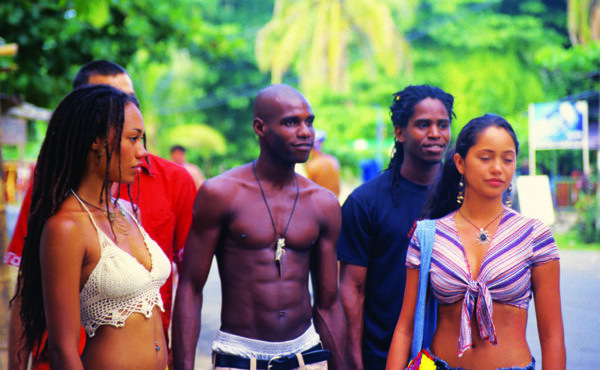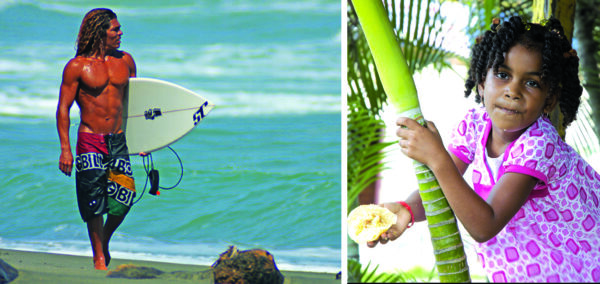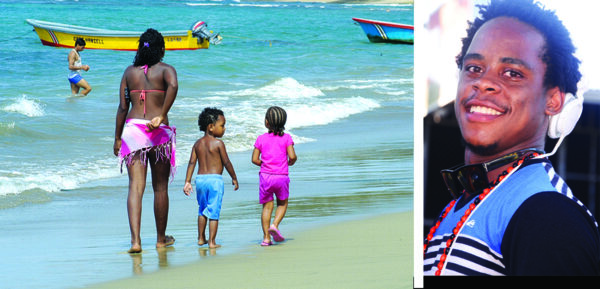
The Afro-Caribbean
Originally from Equatorial Africa this ethnic group came to the country at different historical moments and greatly contributed to enrich the culture and idiosyncrasy of Costa Rica.
At the end of the Middle Ages the world experienced a major change due to a better understanding of the planet that men acquired in the West. The European approached Africa in the fifteenth century and America in the sixteenth century which led them to feel superior; therefore they developed the reprehensible practice of slave trade. Between the sixteenth and eighteenth centuries this trade extends to meet the demand for labor in the colonization of America, being subjected to the toughest jobs ever. Africans accompanied the Spanish settlers in Costa Rica during the discovery of new territories, the settlement of the first towns and the attempt of subjugation of the indigenous.

In the seventeenth century Africans played an important economic role by working in the Matina (Limón) cacao plantations. The Bantu, the Araras, the Mandinga and Ashanti where the predominating groups, who gradually gained their freedom until the abolition of slavery in Central America in 1823. The crossing between blacks, whites and Indians had already begun, constituting cultural ties between different ethnic groups.

By mid-eighteenth century, the turtle fishermen who constituted the minority of the population settled in the coast of Limon founding small towns. These were joined by Afro – Caribbean people after the construction of railways in Limon, Panama and Colombia, who escaped from the war that menaced these regions.
In 1655 Jamaica passed from Spanish to British rule, with them the sugar revolution occurs which caused the arrival of slaves to the sugar plantations, predominantly from the Ashanti Empire of Ghana. The conditions of these people were particularly harsh, being the reason of the phenomenon of the CIMARRONES, runaway slaves. The declaration of freedom, the ruin of the sugar cane plantations in 1860 and the subsequent crisis forced the Jamaican to emigrate from the island. Panama, Cuba and Costa Rica were some of the destinations they chose.

Since 1871, with the beginning of construction of the railway in Limón, they experienced the greatest wave of Afro-Caribbean immigrants from different parts of the Caribbean, especially from Jamaica. They came for the construction of the railway line. The relationship between the Jamaicans and the State was circumstantial because the workers had in mind to return to their land; therefore they kept alive the ethnic and cultural connection with their country of origin. But the financial crisis of the railroad forced many to stay, they engaged in subsistence farming on small plots settled along the rail line. Later on the banana exploitation came, job that the Jamaican was already familiarized with, since it was grown in Jamaica.

Detached from the social and political life of Costa Rica and without Costa Rican citizenship for 5 decades, Afro-Caribbean population was under the influence of the West Indies and of the Central American Caribbean with whom they shared the same cultural heritage. The people of Limón had to fight for an education corresponding to their cultural roots, preserved their language, the Patua, a mixture of English and French, they had their own festivals, they were Protestants, their traditions and customs were Afro – British. English sports are practiced, such as cricket or boxing, they kept their African oral tradition with folk tales and developed their own music, the Calypso. In this framework they had relevant social movements and leaders, such as Marcus Garvey who was an important figure in them.

The isolation of the black population by the Costa Rican government began to disappear in 1948 when the government of Jose Figueres took the first step to repeal discriminatory laws that classified the Afros, Chinese, Syrian, Gypsies, fugitives and mentally insane people as undesirable. He overrides the law that prohibited the migration of blacks to the Pacific following the banana plantations and opens the door to a process of integration between the Caribbean of Costa Rica and the rest of the country.
The Inherited customs of the West African and the West Indian cultures definitely marked the Caribbean culture, a legacy that is seen in their cultural manifestations.

In their Architecture you can notice the clear British influence, which came from the West Indies and Jamaica, having wooden Victorian houses built on pillars, painted with bright colors, enclosed by a porch and decorated with cheerful Memorandum borders. It should be noted that at the beginning of Limón’s architecture they built provisional houses, due to the idea of returning to Jamaica, therefore you can notice less decorative details than in other regions of the Caribbean.

Limon´s gastronomy highlights the subtlety of its dishes, in those who have always been used ingredients that nature provided and that they also planted for their nutritional needs. The coconut milk is the base on which they cook delicious fish, seafood and rice with beans, or the famous Rondón, a soup made with the vigorous products they had such as tubers like the cassava, camote, ñampí or tiquizque, plantains and accompanied by red snapper, mackerel, jurel, lobster, crab or king crab.

Recipes full of flavor such as Jaquee or vegetal brains with cod, their famous Caribbean sauce with which they season meat and chicken, or the popular Pati, delicious spicy meat pie. In Caribbean cuisine the most common spices used, are: pepper, rosemary, thyme, curry or hot chili called Panamanian chili. In the sweet stuff you have the Plantinta, a stuffed pie with pineapple or banana, ginger cookies and Pan Bon.


Fotografias de Paco Salmerón
Texto de Juan Carlos Lorite y Paco Salmerón